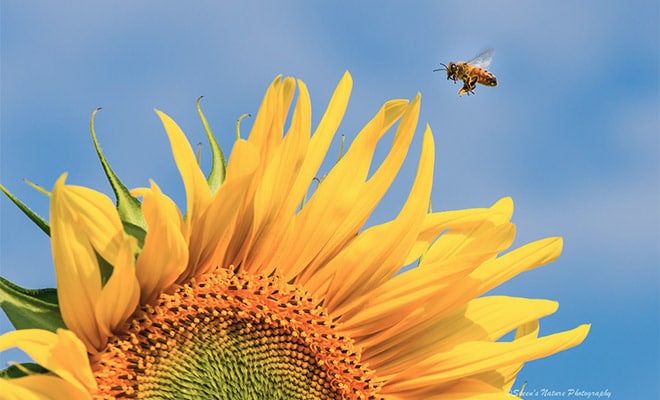If you are wandering around the planet looking for fantastic landscapes to shoot, your eyes will probably be on the horizon – not on the floor. This may mean that you end up stumbling into some plants that you would do better to avoid.
While everyone knows the perils of stinging nettles, there are fates far more dangerous that might await you in woodland or even out on the plains. There are plants everywhere that have natural defence mechanisms against being plucked or eaten by humans, which could have nasty consequences for you.
Here are the poisonous plants that you should be on the watch for, whenever you are in an area where they grow.
Manchineel
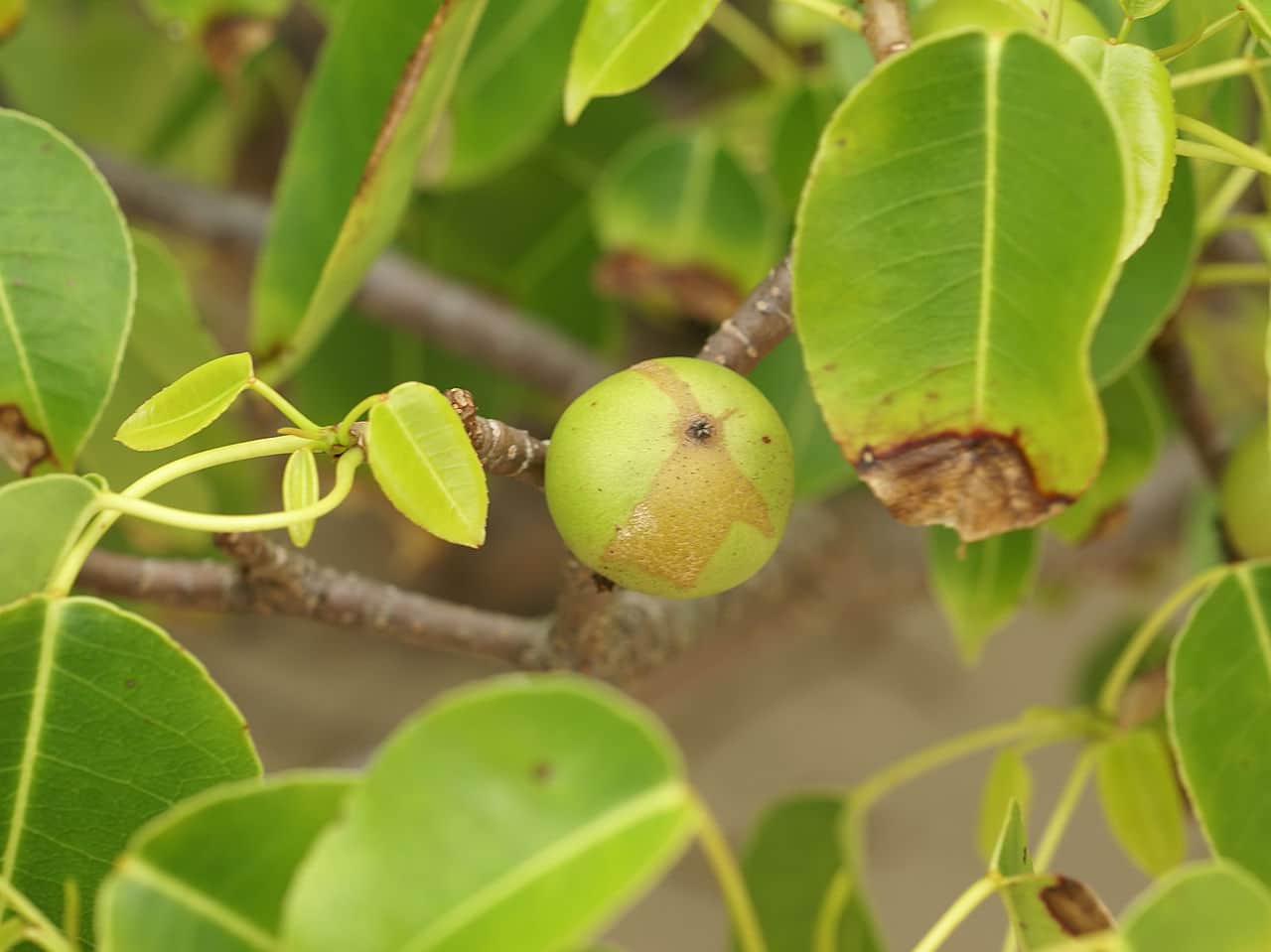
By © Hans Hillewaert, CC BY-SA 3.0, https://commons.wikimedia.org/w/index.php?curid=7894318
Known as manzanilla de la muerte in Spanish, which translates to ‘little apple of death’, manchineel can look like an innocuous apple tree. Unfortunately, these fruits are not made for human consumption.
Eating the fruits will blister your mouth and throat, but even if you just brush up against the tree, you could be in trouble. The milky sap which comes out of the leaves and bark when they are broken can cause a strong allergic skin reaction. This is because of a chemical called phorbol which is contained in the sap. Even if you take shelter under the tree during a storm, you could find raindrops collecting phorbol from the leaves and then landing on your skin to leave blisters. It’s eve thought that Juan Ponce de Leon was killed by an arrow dipped in the sap of a manchineel tree.
Manchineel grows in Florida, the Caribbean, and parts of both Central and South America. The bad news about those dangerous leaves is that it is also evergreen, so you have to look out for it all year round!
Poison Ivy
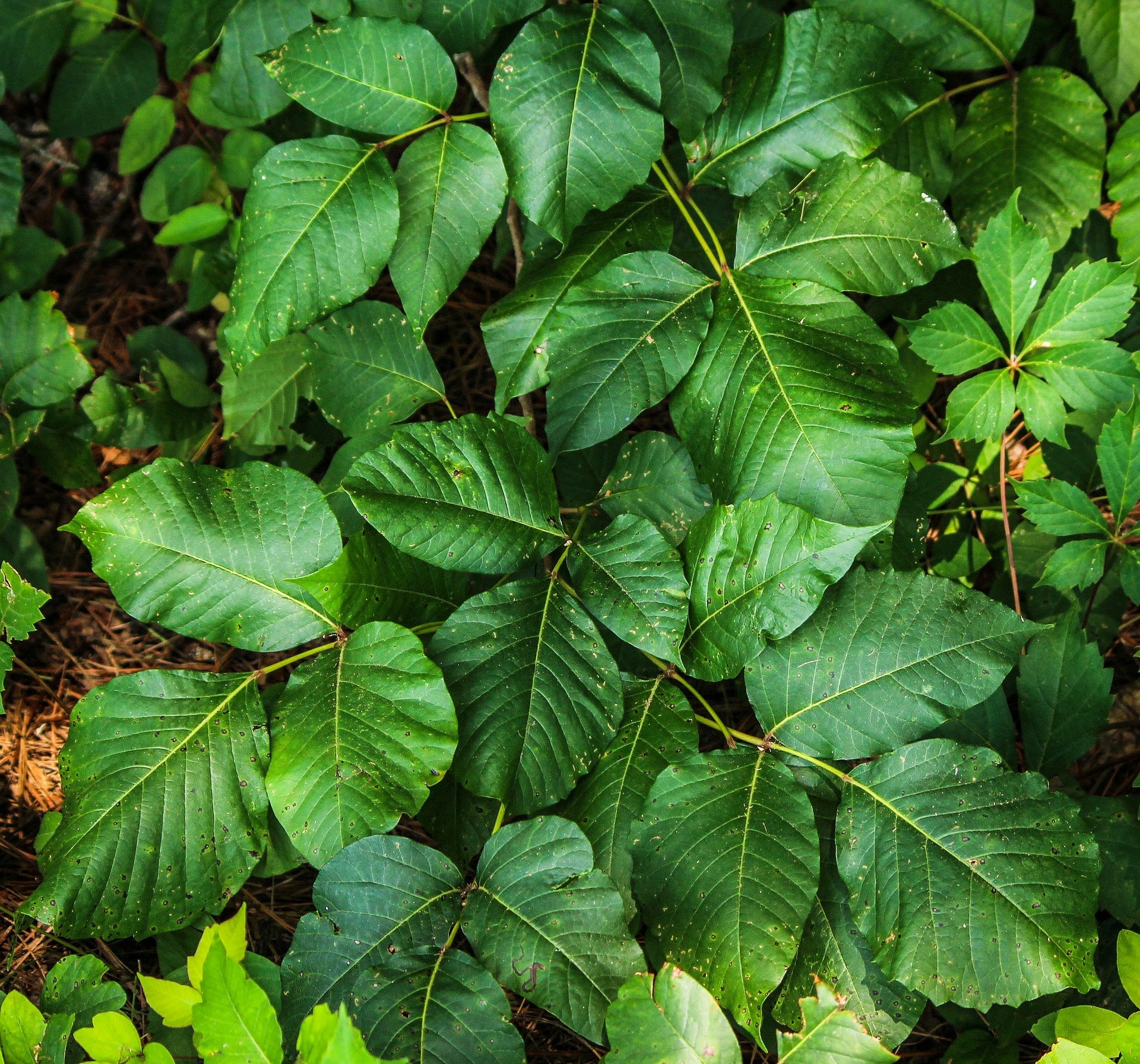
Image by JamesDeMers on Wikimedia Commons
We had to bring up poison ivy! Infamous enough to be the inspiration behind a Batman villain, the urushiol in the plant can cause contact dermatitis. This involves itchy and painful inflammations on your skin.
Urishiol is also present in two close relatives of poison ivy – poison sumac and poison oak. It can stick around on anything else that gets in contact with the plant – such as your clothes or equipment – and can still cause inflammation later on if you are handling these with your bare hands.
If you spot the ‘leaves of three’ (the tell-tale sign), then be careful to undress without touching the outside of your clothing and get it washed as soon as possible. The rash can last for more than three weeks, although it does not usually require any further medical treatment and will go away on its own.
Hogweed
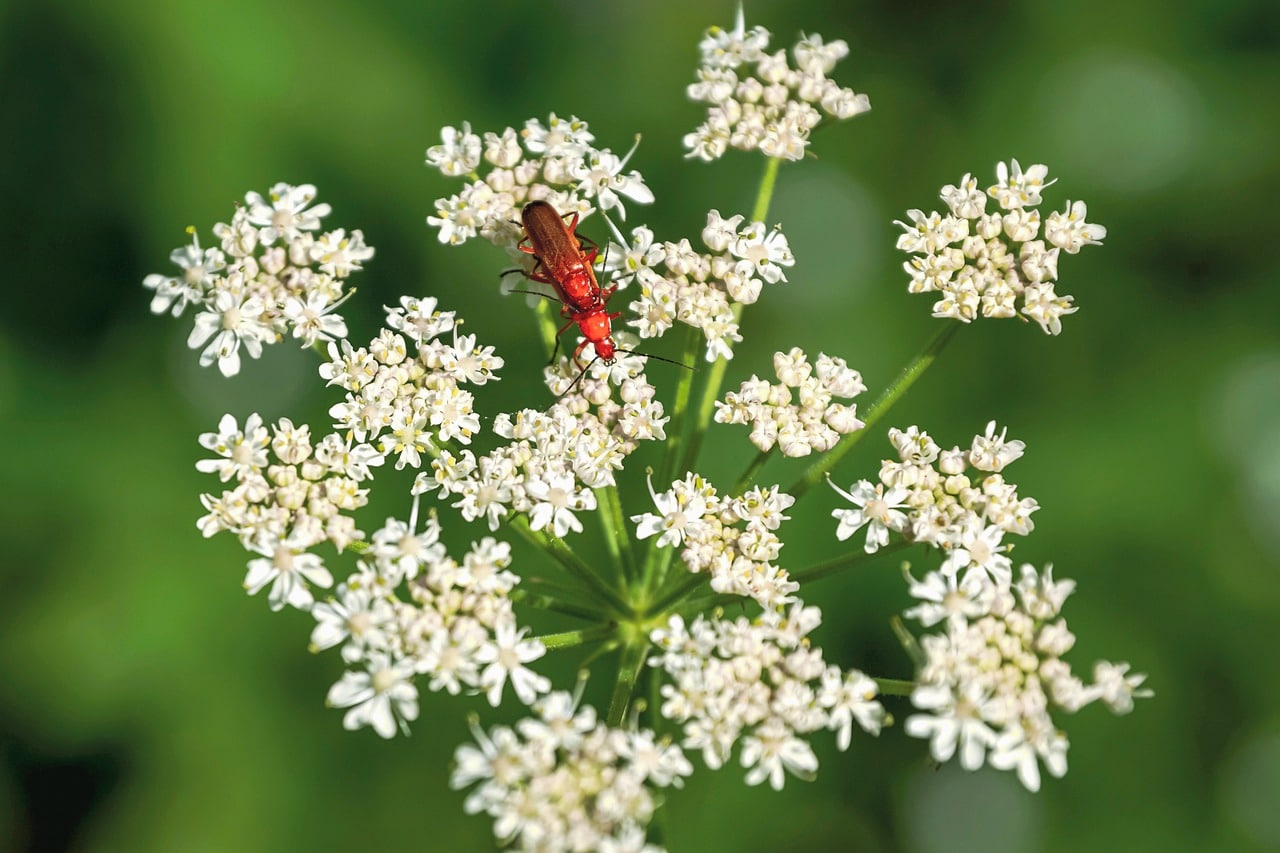
Image by Susanne Jutzeler, suju-foto from Pixabay
Growing natively across Europe, and now naturalised in some parts of the US, the common hogweed and giant hogweed varieties are both to be avoided. The tall plants, which feature white flower clusters that are easy to spot, contain furocoumarins in their leaves and sap. Should this come into contact with your skin, it will cause phytophotodermatitis.
Although it may contain the word ‘photo’, this skin complain is not a photographer’s friend. It will cause your skin to erupt into severe blisters if it is exposed to sunlight. Considering that you are almost guaranteed to be outside when you touch the plant, this will mean an instant reaction. It could be worse, too – you can be blinded if the sap gets into your eyes.
If you see a plant that looks similar but you aren’t sure it’s hogweed, it’s best to avoid it anyway. Water hemlocks look very similar and contain a deadly poison, so you will want to stay away from those as well!
Tread-Softly
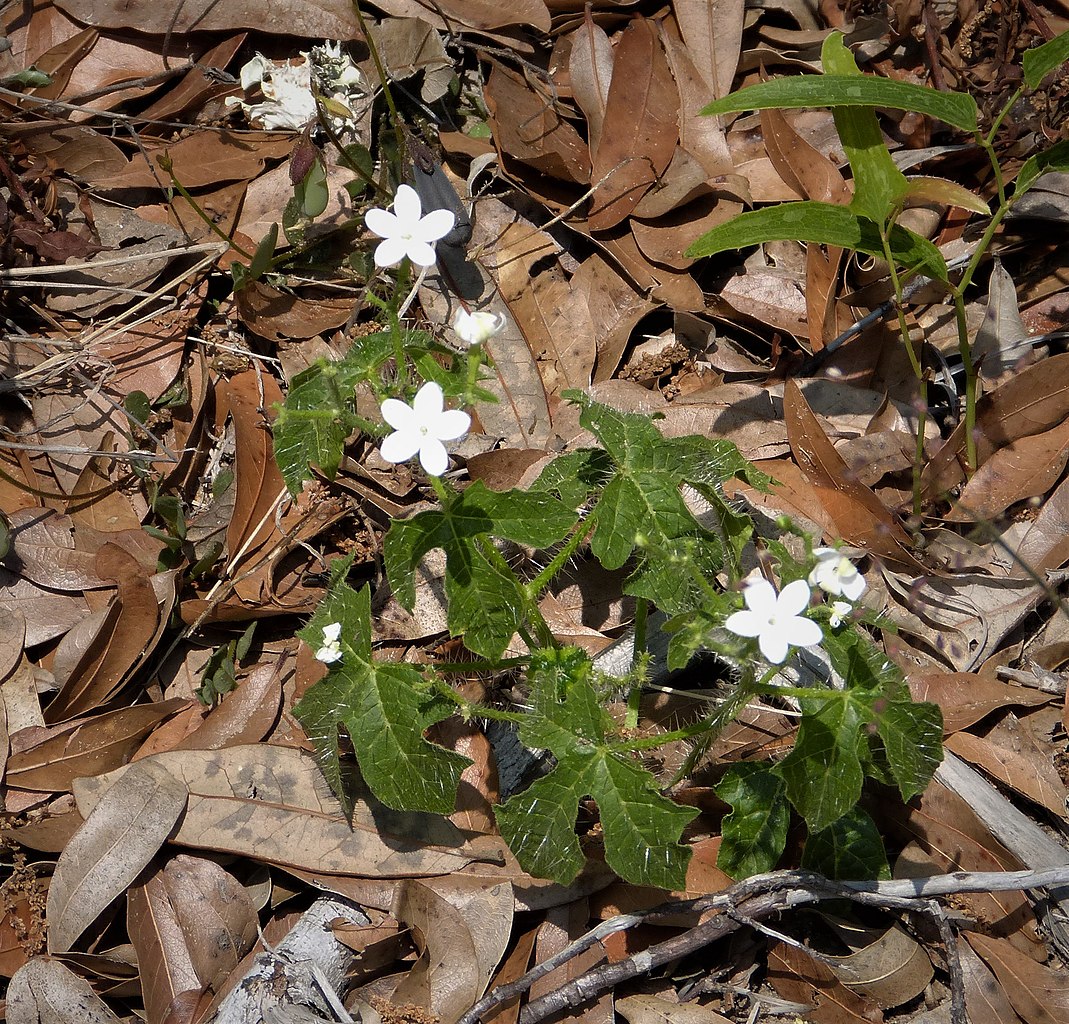
Image by Gailhampshire on Flickr
The name of this little herb is no joke. You really will want to tread softly if you are around where it grows in the south-eastern US! It is also called noseburn and finger-rot, for equally good reasons. The whole plant, including the flowers and fruit, are covered in little stinging hairs, much like a leafy cactus.
If they break off into your skin, they will release irritant compounds which will immediately begin to bother you. The effects include intense itching and stinging sensations, and though they normally last only an hour, you can also experience skin discolouration for a few days. If you’re working with a model, you don’t want them to go through that!
While it’s unlikely that you will be walking around with bare feet while engaged in landscape photography, you will want to watch out for unprotected ankles or even skin on other parts of your body if you squat or kneel to get a shot. If you brush against the herb by accident, you could be off your game for quite a while. Not ideal when golden hour is fleeting by the minute!
Gympie Gympie
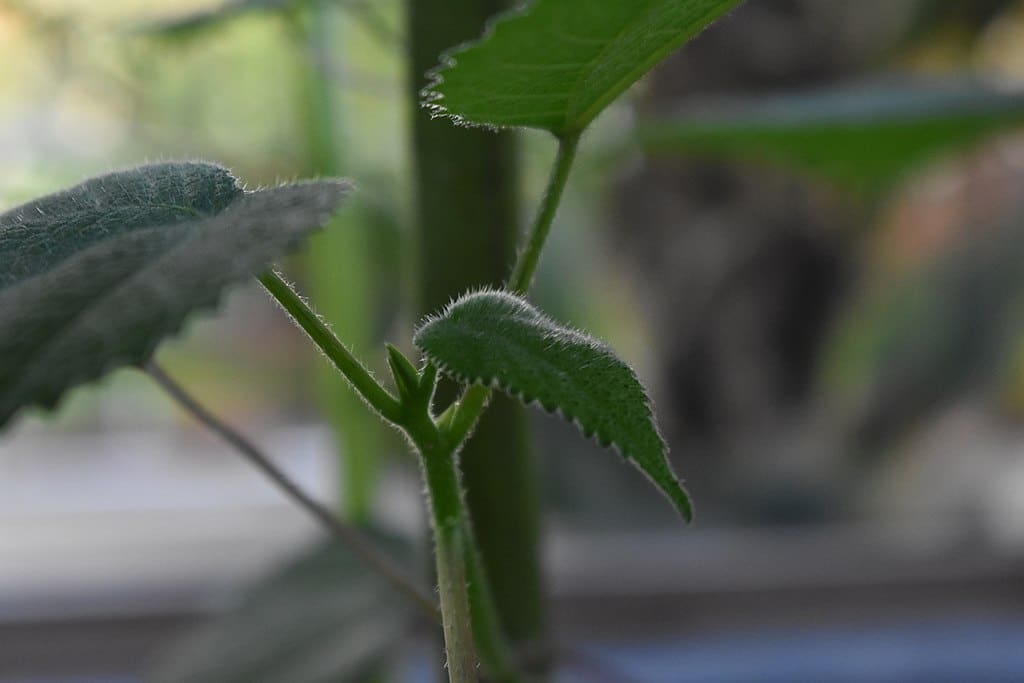
By N. Teerink [CC BY-SA 4.0 (https://creativecommons.org/licenses/by-sa/4.0)]
While some of the plants on this list might cause discomfort for a few hours or a day, or even a few weeks, gympie gympie trumps them all with affects that can continue to flare up for years. The leaves can trigger an extremely intense allergic reaction, even pushing victims into anaphylactic shock. If that doesn’t kill you outright, you might wish it had. The sting causes debilitating pain that can remain at an excruciating level for months – so much so that there are plenty of reports of horses jumping off cliffs to die because they have been driven mad by the pain.
How bad does it hurt? People who have experienced it have equated it with acid burns and electrocution. Imagine that – but continuing day after day. Anyone working near these trees is required to wear protective clothing and carry antihistamine pills in case they are stung. As for you, being a professional photographer will in no way protect you from the effects – you will need to steer as clear as possible.
Foxglove
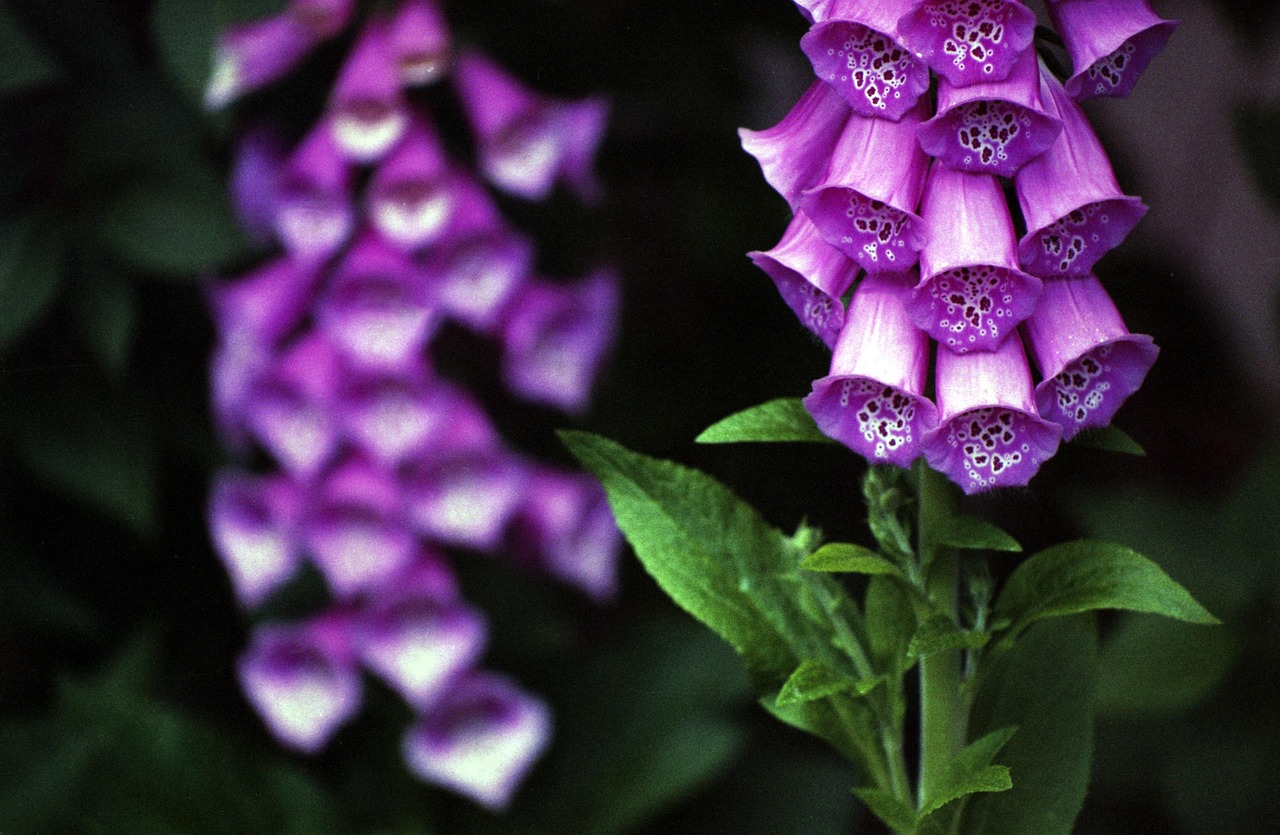
Image by Benjamin Balazs from Pixabay
Talking of dock leaves, you should be careful not to get them mixed up with other plants – as the results could be disastrous. The broad, green leaves tend to be quite recognisable and they are well-known for having medicinal properties. What you might not expect, however, is that they are quite easy for a layman to mistake for other plants – such as foxglove, which can cause irritant skin reactions.
You might laugh at the fact that people have been known to try to use the leaves of a foxglove plant as toilet paper in the wild, only to come out in an itchy rash, but it’s less funny if you imagine trying to use these leaves to soothe the stinging from a nettle. It would actually make things much worse. What’s more, while the purple flowers of the foxglove are iconic, most people don’t know that it takes two years for them to grow – and in the meantime, the foxglove just looks like a leafy plant on the forest floor. Europeans beware!
Pain Bush
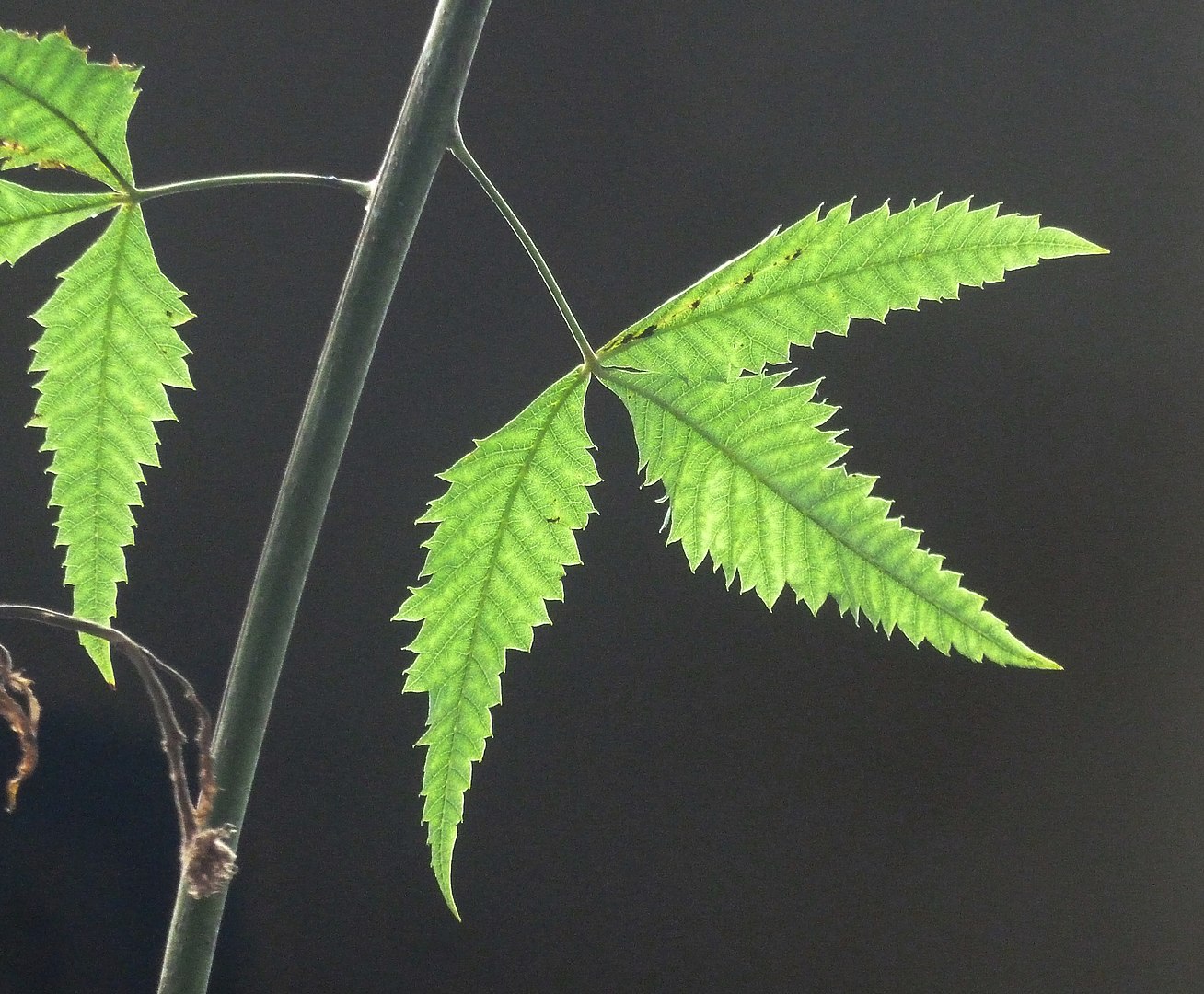
By JMK – Own work, CC BY-SA 3.0, https://commons.wikimedia.org/w/index.php?curid=46708177
Over in South Africa, you will find a plant which is named just about as clearly as it can be. Even if we gave you no further information, you would know that the pain bush is one to be avoided. It is sometimes referred to as the African poison ivy because the effects are somewhat similar.
The plant exudes a creamy sap which turns black when it is dried, and it is full of heptadecyl catechols – very nasty chemicals that you will want to avoid. Contact with your skin will create a livid, swollen rash which blisters and pops. The symptoms usually last several days. Strangely enough, some people have natural immunity to the plant’s poisons – so don’t assume that it would be safe for you to touch the sap just because you’ve seen someone else do it without injury!
There are plenty more plants out there which could potentially kill you, or at least make you very ill, when eaten. For this reason, it’s definitely not advisable to go around eating any berries, fruits, nuts, or roots that you find unless you have full knowledge of what they are. So long as you don’t do that, you would think you would be safe – but as this list has demonstrated, simply baring your skin as you walk through a lush terrain could leave you in agony!




